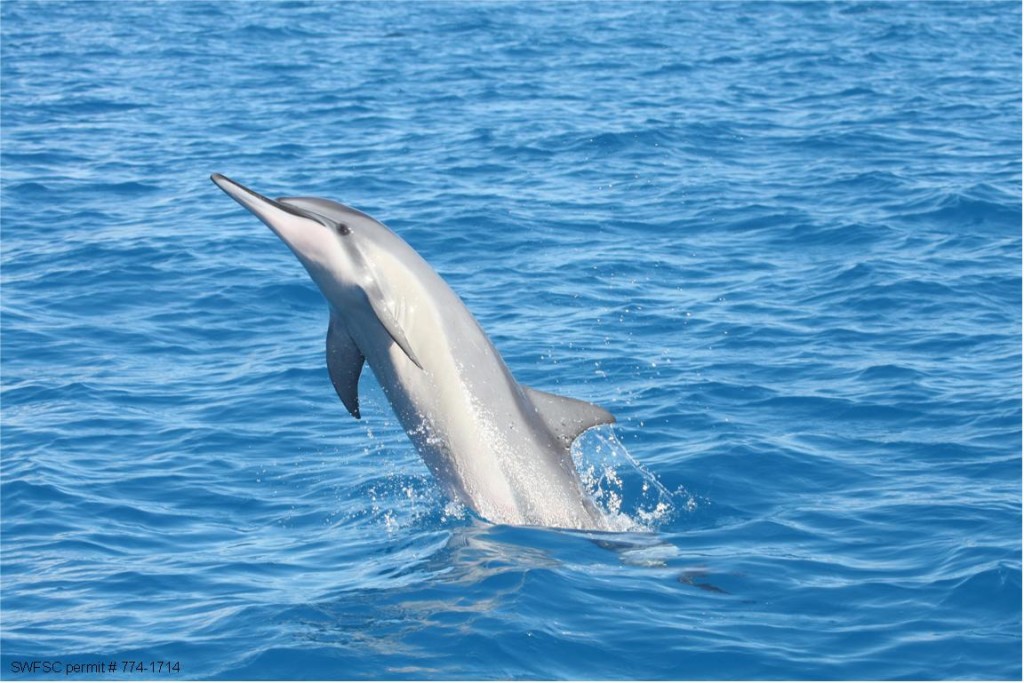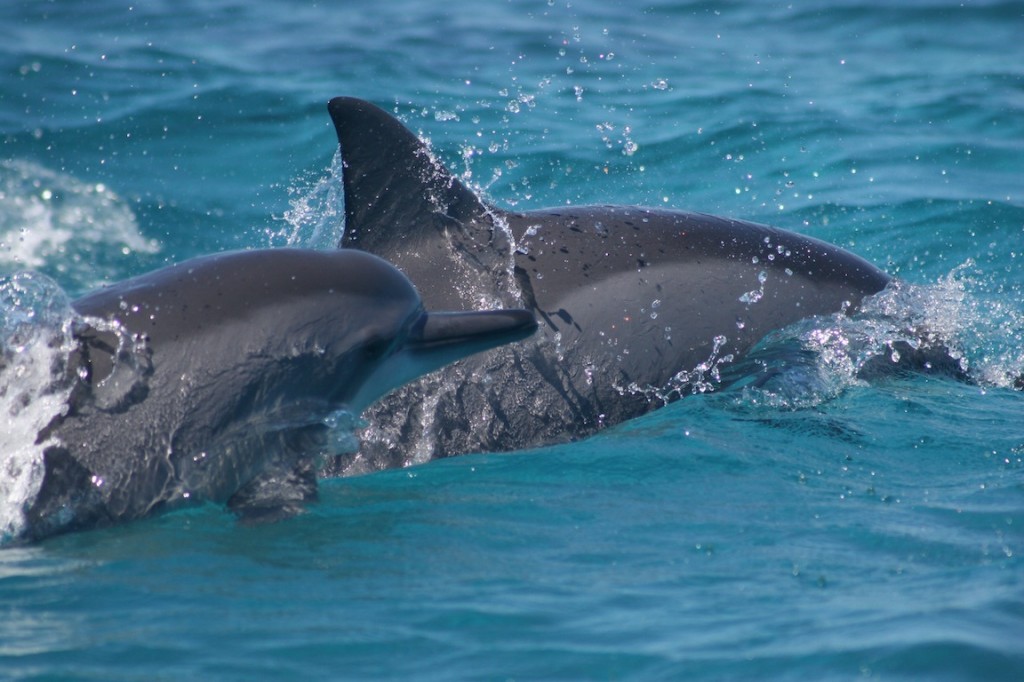The SMART way to view wild dolphins
April 29, 2013
New Mission Blue partner, Dolphin SMART began when a number of conservation agencies, including NOAA’s Office of National Marine Sanctuaries and National Marine Fisheries Service, the Dolphin Ecology Project, and Whale and Dolphin Conservation, as well as local businesses and members of the public, teamed up and developed a unique, multifaceted program encouraging responsible viewing of wild dolphins and recognizing businesses that participated. By joining this exciting conservation program, Dolphin SMART recognized businesses to encourage responsible wildlife viewing and to help aid in dolphin conservation. ~ Ed.
Here is their story, straight from the team at Dolphin SMART!
Dolphins, like many other marine mammals, are beloved by humans around the world. These popular mammals, whose energetic behaviors tend to fascinate us all, conjure lasting positive images of themselves for people. With the help of “Flipper,” people have associated dolphins with a friendly, smiling, life-saving wild animal. But this “Flipper syndrome” may actually lead people to seek out close interactions with these animals, which inadvertently causes harm. Sometimes it is easy to forget that lively coastal dolphins are vulnerable to disturbance by boats and people. In fact, the Marine Mammal Protection Act protects dolphins from any form of harassment that can disturb their natural behaviors.
Many people now seek out any opportunity to gain a small glimpse into the world of wild dolphins. This phenomenon has created a tourism explosion driving most tropical vacation spots to now feature some element of dolphin viewing. Viewing marine mammals in the wild is big business with an estimated economic impact of nearly $1 billion USD in 2008. According to an International Fund for Animal Welfare (IFAW) 2009 report, the United States has the world’s largest marine mammal viewing industry with approximately five million participants – 250,000 of which specifically view dolphins.

This activity, which may seem relatively benign at first, has actually been a factor in wild dolphin population declines in some areas, and has been shown to negatively affect the health of wild individuals and populations. Dolphins depend on their coastal homes for protection from predators, to care for their young, and to hunt for food. Disruption by people and boats can prevent dolphins from accomplishing these important survival behaviors. In extreme cases, frequent, repeat disturbance to dolphins will cause them to permanently move away from their resident bay to another area. This new area may lack disturbance from humans, but may not have the optimal characteristics needed for their survival. For more information, and a list of supporting literature on the effects of tourism on small cetacean populations, please visit the National Marine Sanctuaries – Dolphin SMART Outreach Page.
In some coastal towns, specifically in the Southeastern United States and Hawaii, a sizable portion of the economy depends on dolphin-viewing business. Protecting dolphins and their coastal homes is crucial for conservation efforts and economic sustainability of dolphin-viewing businesses.
Attending a dolphin viewing tour is a great way to see the animals in their natural environment. It is an important industry that has the potential to educate millions of people about wild dolphins every year. The more people learn about dolphins, the more they may care, and the more likely they may want to help protect them.
So, how can you help wild dolphins while supporting local businesses and enjoying the behaviors of wild dolphins? Become Dolphin SMART!
Dolphin SMART:
Dolphin SMART is a one-of-a-kind program that combines responsible viewing and advertising practices; educational trainings and materials; field research; and outreach to benefit both dolphins and participating dolphin-viewing businesses. Dolphin SMART is a collaborative effort between government, non-profit organizations and researchers. The four main sponsors of the program are NOAA Fisheries, National Marine Sanctuaries, Whale and Dolphin Conservation, and the Dolphin Ecology Project. Working together with local businesses and partners, Dolphin SMART aims to promote responsible stewardship of wild dolphins in coastal waters by minimizing the potential of wild dolphin harassment and aiding in dolphin conservation.

The Dolphin SMART program is designed to:
- Minimize the potential of wild dolphin harassment caused by commercial viewing activities.
- Reduce expectations of close interaction with wild dolphins in a manner that may cause harassment.
- Eliminate advertising that creates expectations of engaging in activities that may cause harassment.
- Promote stewardship of local coastal waterways.
Program participation is open to commercial businesses conducting wild dolphin tours or any commercial vessel that may opportunistically view wild dolphins. By joining this exciting conservation program, Dolphin SMART recognized businesses ensure responsible wildlife viewing to help aid in dolphin conservation.
The dolphin-viewing businesses that participate receive a number of incentives, including training, press releases, educational and marketing materials, and an enhanced tour experience for their customers, which results in increased bookings. These businesses then pay it forward by educating their guests on how to responsibly view dolphins while also responsibly viewing the dolphins on their own tours, thus minimizing disturbance to the dolphins.
Dolphin SMART originally began in the Florida Keys National Marine Sanctuary in 2007 where there was an increased amount of dolphin viewing and boating activity in a small area. This grass-roots voluntary program was developed in a pay-it-forward style. Since the original 2007 program implementation, the program has rapidly expanded to a national level and now includes businesses in Orange Beach, Alabama, along the southwest Florida coast, and in the Hawaiian Islands.
From bottlenose dolphins in the Southeast to spinner dolphins in Hawaii, these coastal dolphin species face similar challenges of balancing the constant threat of disturbance from boats and people while also engaging in the behaviors necessary for survival. By choosing Dolphin SMART, you are supporting businesses that have made a commitment to helping protect these dolphins while also running a tour in a forward-thinking manner that can sustain business as well as the dolphins’ survival by minimizing disturbance. Dolphin SMART is a win-win for businesses, guests, and the dolphins.

Current Dolphin SMART Operators:
Florida Keys: Fury Water Adventures
Southwest Florida: Adventure Cruises, Banana Bay Tour Company, Captain Brian Holaway, Florida Aquarium Wild Dolphin Ecotour, Tarpon Bay Explorers, Shell Key Shuttle
Alabama: Cetacean Cruises (L.A. Watersports)
Hawaii: Hawaii Nautical and Port Waikiki Cruises, Holoholo Charters, Ocean Joy Cruises, Star of Honolulu- Hoku Naia,
Dolphin SMART Proud Supporters:
Businesses not involved in wild dolphin viewing can also join the Dolphin SMART initiative by becoming a Dolphin SMART Proud Supporter. Proud Supporters are an important aspect to the Dolphin SMART program, and help us achieve our mission by raising awareness about the program and the recognized businesses. Increased awareness of the program serves to further educate the public about the importance of booking Dolphin SMART and responsibly viewing wild dolphins to aid in conservation. By being a Dolphin SMART Proud Supporter, companies and organizations also become stewards for the environment and dolphin conservation!
Many businesses have already joined the cause to help wild dolphins by becoming a Dolphin SMART Proud Supporter. For a complete list of Dolphin SMART Proud Supporters, please visit our website at: www.dolphinsmart.org and click on the “Proud Supporters” link.
What can you do to help?
When booking a wild dolphin viewing tour, “Look before you book!” Seek businesses with the Dolphin SMART logo and current year on boat decals, flags, and businesses advertisements. Or, visit www.dolphinsmart.org to find Dolphin SMART businesses. If Dolphin SMART is not yet in the area, remember the cornerstones of the program when choosing a tour: responsible viewing and advertising.
If you are embarking on your own boating excursion, there are some simple guidelines you can follow that can help you improve your experience and give you peace of mind that the dolphins are not being disturbed.
- It is important to stay 50 yards away when approaching dolphins; this simple rule allows the dolphins to continue their activities but you can gain an unobtrusive glimpse into their daily lives. You will likely get a chance to see much cooler, natural behaviors if the dolphins are not disturbed!
- Bring binoculars to spot interesting behaviors like aerial displays or feeding from safe-viewing distances.
- Remember to never feed wild dolphins—it is harmful for the dolphins and is also illegal.
- Please do not swim with wild dolphins. These close interactions can change the dolphins’ natural behaviors, and can disrupt critical behaviors like their ability to rest, which may constitute harassment, which is illegal.
In waters from Florida to Hawaii, everyone can become a dolphin steward while being rewarded with seeing fascinating, natural, wild behavior by booking Dolphin SMART and viewing wild dolphins responsibly! Please help ensure future generations will also have healthy dolphin populations to enjoy in their natural habitat by conserving our wild dolphins today. “Do your part, book Dolphin SMART!”
Feature Photo (top) Bottlenose Dolphin – Credit: Dolphin Ecology Project









One thought on “The SMART way to view wild dolphins”
Comments are closed.